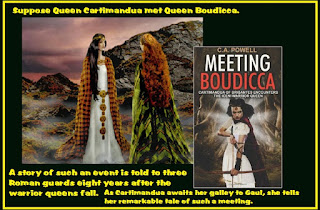This is a new cover for the novel; Meeting Boudicca. It is a fictional story of a secret encounter between the Iceni Warrior Queen and Cartimandua of Brigantes. When Boudicca lost her final battle against the Roman Empire she went into the wilderness to take poison and die. Her body was never found.
However, prior to ending her life and leaving the cruel world of Roman Britain, the warrior queen must play one last part in the drama of another British queen of the Brigantes. Her name was Cartimandua. She was everything that Boudicca was not. A friend of Rome.









